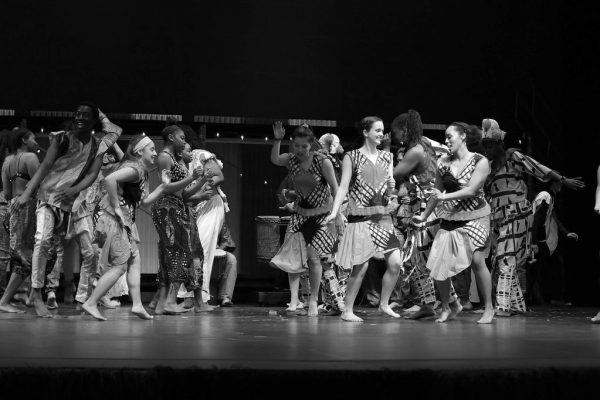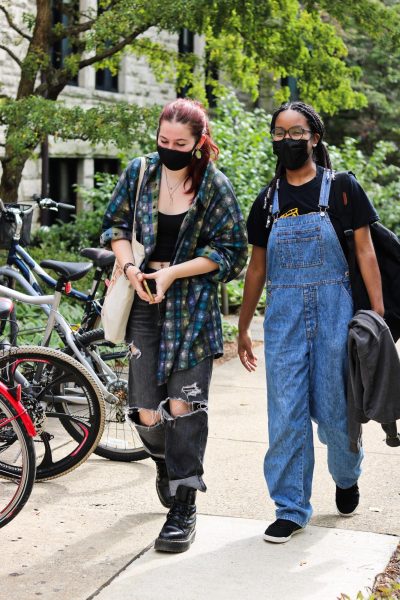Reflecting On An American Multiracial Experience
There is a loneliness in being multiracial. I cannot look at my parents, or my grandparents, and see myself reflected back clearly. Even my brother, who has the same racial makeup as me, does not have the same experience. In the sunlight, he tans; I burn. If he forgets to shave before we go to the airport, his luggage starts to look suspicious. With my lighter skin, I pass by easily.
I have wanted to write a piece about multiracial identity for a long time. However, it never felt right to do so, because the primary unifier of multiracial people is difference. We are all the same only in that we are not the standard. How could I write a piece about the multiracial experience, when there are infinite racial mixes, infinite stories to tell? How could I explain to people what mixed race is when I am hardly sure myself?
So I will speak about my experience. An experience, it is worth noting, that is entirely American. I will try to be honest about that which I do not know, but I might generalize when I feel it is appropriate. More than anything, I will try to explain. In a country where mixed-race is the exception, the words pushed to the margins, I hope that you’ll stay with me and do your best to acknowledge your own assumptions regarding race. After all, they were not created with me in mind.
I can already imagine your curiosity brimming, bubbling up to the all-important question: what am I? After all, it is through this lens that the validity of my voice is often determined. I could say that my father is white, and my mother is Indian. His side is mainly Polish, with other European ancestries sprinkled in. Her side of the family is Parsi, ethnic-Persians living in India for over a thousand years. But that is my ancestors’ story, not mine.
To the U.S. Census Bureau, I am Select All that Apply — White. Asian. To the CDC-standard form I fill out every time I get a COVID-19 test, I am Pick One — White. Asian. Other. To my Indian aunt who didn’t understand why I wanted to form a multiracial identity club at Oberlin, I am white, the shade of white that broadcasts American, that glistens with Westchester privilege. At a family reunion of my 50-odd white relatives, I am 50 percent of the brown. When an uncle makes a racist joke about Asians, and my family laughs along, it feels like more.
I am not writing to claim that my racial status limits me, or that I have faced undue hardship because of it. For me, it has not been a racial or social challenge on par with those faced by minorities in this country. It is, instead, a question of identity. It’s a never-ending search for my place in this world, in this country where the binary rules and the lines are bold. The U.S. notably does not have a multiracial category in the Census, nor does it create separate categories explicitly for mixed-race people, as is common in neighboring countries in Latin America. Without getting into the history of exactly why that is — see “one-drop rule,” slavery — the result is that the U.S. views multiracial people through a monoracial lens.
An Oberlin example of this is the Junior Practicum, which I participated in last fall. For the Diversity, Equity, and Inclusion panel, white and BIPOC students were separated into two different sessions. Later, the BIPOC panel was split into monoracial and multiracial breakout rooms. There was noticeable pushback against this decision. There was even an article in this paper that talked about it. However, what I think that article, and many other frustrated students, missed in that debate was the reasoning behind their decision. Multiracial students had reached out to the Practicum team because they did not know where to go. Some students went to the white group, whereas I chose to go to the BIPOC group. One of my friends, anticipating this tension, decided not to go altogether. This may seem minor to some people, but it is the constant awkwardness that comes with being multiracial. You do not know where you belong, or where you will be accepted.
We have terms to encompass people in this gray area — “white-passing,” “person of color.” These are both terms constructed to indicate proximity to and distance from white privilege. What they don’t do, however, is tell me what I am. I can be a white-passing person of color, half-white on my dad’s side and half-Indian on my mom’s side, a Parsi with Persian ancestry, and yet that multitude of terms encompasses only pieces of my identity. It is a shaky foundation, imperfectly cobbled together.
Some multiracial people choose not to see themselves as halves or pieces of their identities, but wholes of each of them. That would make me wholly white, wholly Indian, and wholly Persian. This also doesn’t feel right to me. I cannot say that I am white, the same way I cannot say that I am Indian, simply because when I am around monoracial white or Indian people, I am an outsider. Instead, I often feel my identity is constructed of “nots” — I am not white, not Indian, and not Persian.
This truth became apparent when I arrived at Oberlin. For anyone familiar with the campus, it shouldn’t shock you when I say that race here is pretty important. Coming from a high school that adopted the race narrative of equality through colorblindness, this was quite the adjustment. While I have learned a lot here about race and identity, and I am grateful for that education, socially it has been tricky. In my opinion, social groups at Oberlin form most cohesively around shared identities or shared interests. With the former avenue closed to me, I felt forced to seek out activity-based clubs.
Over my first year and a half here, I grew envious of the numerous identity-based events and organizations. I watched my friends sing childhood songs with people they’d never met, share familiar foods together, and speak in languages that sounded like home. I wondered why I was denied that. Why could I not have a place, a people, that felt like not just a part of me, but all of me?
It was around that time that I started thinking about forming the Multiracial Students Association, a club I am currently running with several friends. However, I decided I first needed to confirm that I wouldn’t fit in elsewhere, and I went to a South Asian Students Association meeting. Some friendly Obies had invited me to join SASA the year before, but I was initially too uncomfortable to take them up on their offer. When I finally did go, I knew my initial instinct was accurate. The students were welcoming, but I felt my distinct otherness. A couple of us grabbed dinner afterward, and one of the students stumbled his way through the question I knew was coming. “So you, uh, you’re definitely from, like, where in South Asia are you?” I don’t think he meant it offensively, but his tone made it clear what he was asking. Do you belong? Are you one of us?
Sometimes I wonder which half of me is better. My whiteness allows me to move easily through this world, with inarguable privilege. My Indian half separates me from that whiteness, the whiteness so commonly reviled by BIPOC people on campus, my own family, and myself. Yet to even have that conversation with myself is exhausting. To doubt my own identity, and to try and shape it in the form that will please monoracial people, whether BIPOC or white, is disingenuous to who I really am.
I wish I could just be me. I know that this is a bit of a fantasy — our country remains deeply divided along racial lines, and it will remain that way for the foreseeable future. However, multiracial people have been proven to have flexible views on race, accepting that race is socially constructed and being more open to interracial interactions and relationships. Maybe it’s inherent to our identity to wish for blurrier lines.
I don’t know where multiracial people should fit into the American racial framework. I don’t have a solution. All I know is that every day there are more of us, and we need space. We need our country to allow us to define ourselves, instead of cramming us into historically flawed, monoracial categories. As I am still learning every day, half is more than enough, and pieces aren’t worth less than a whole.




